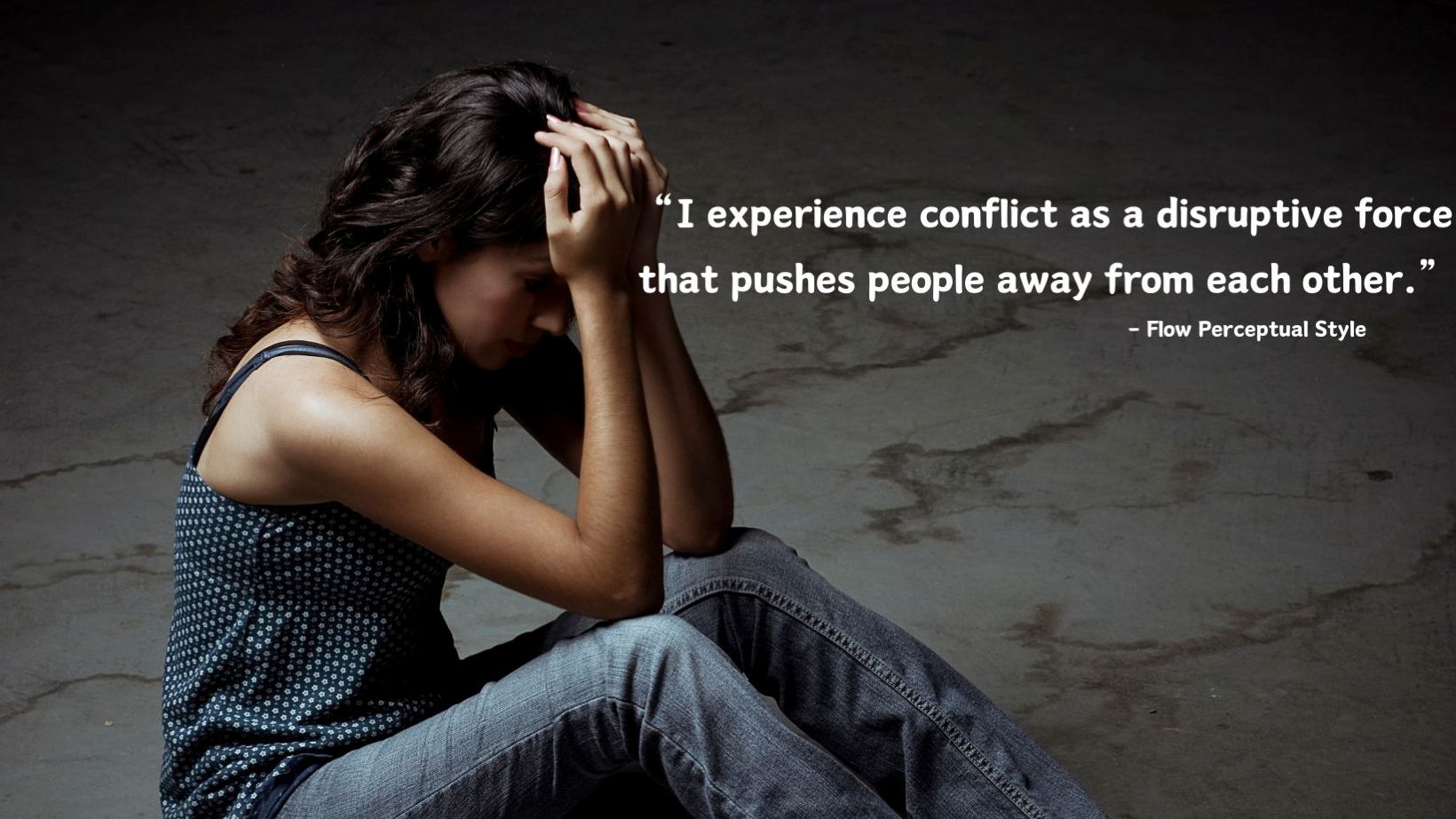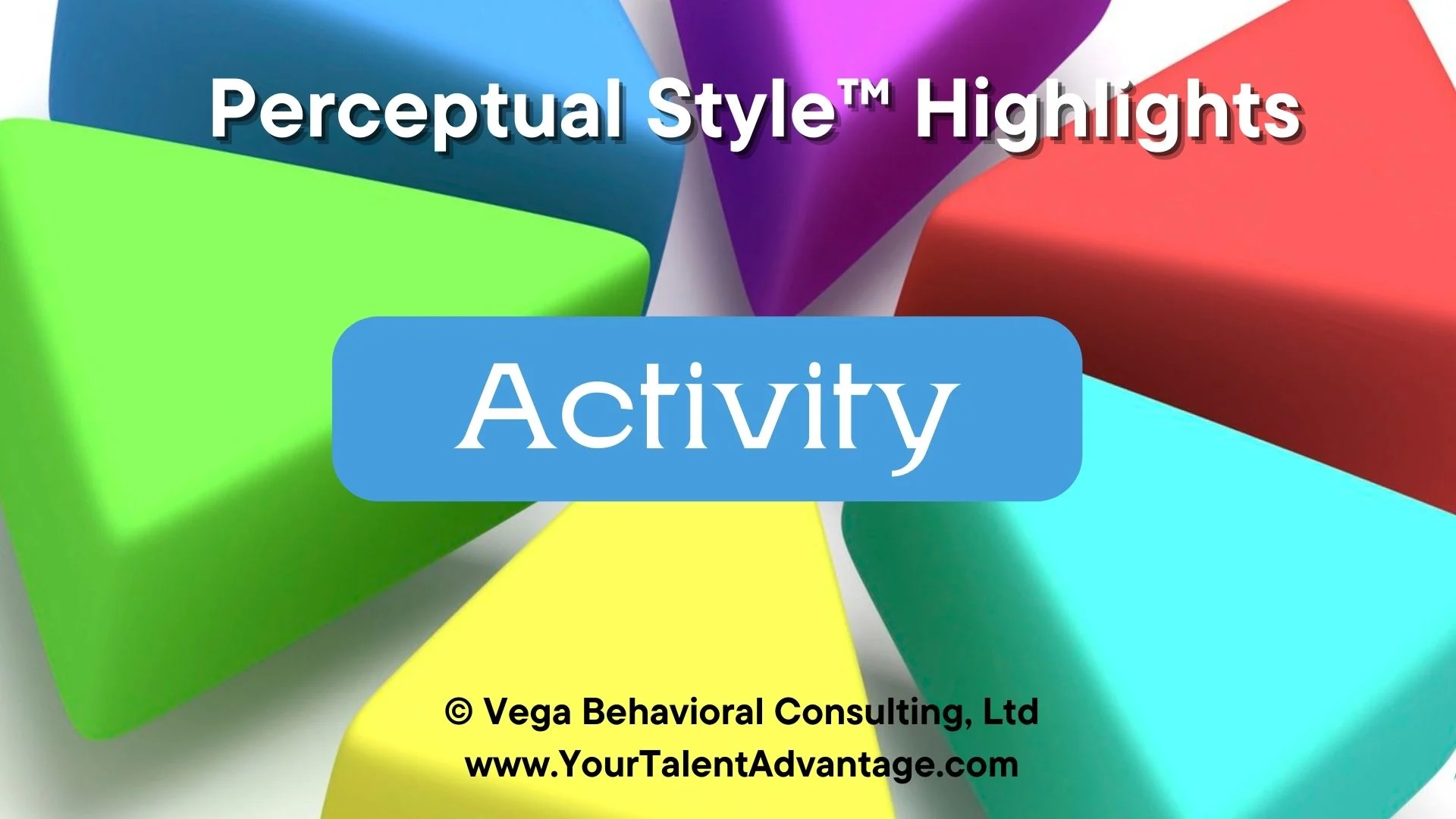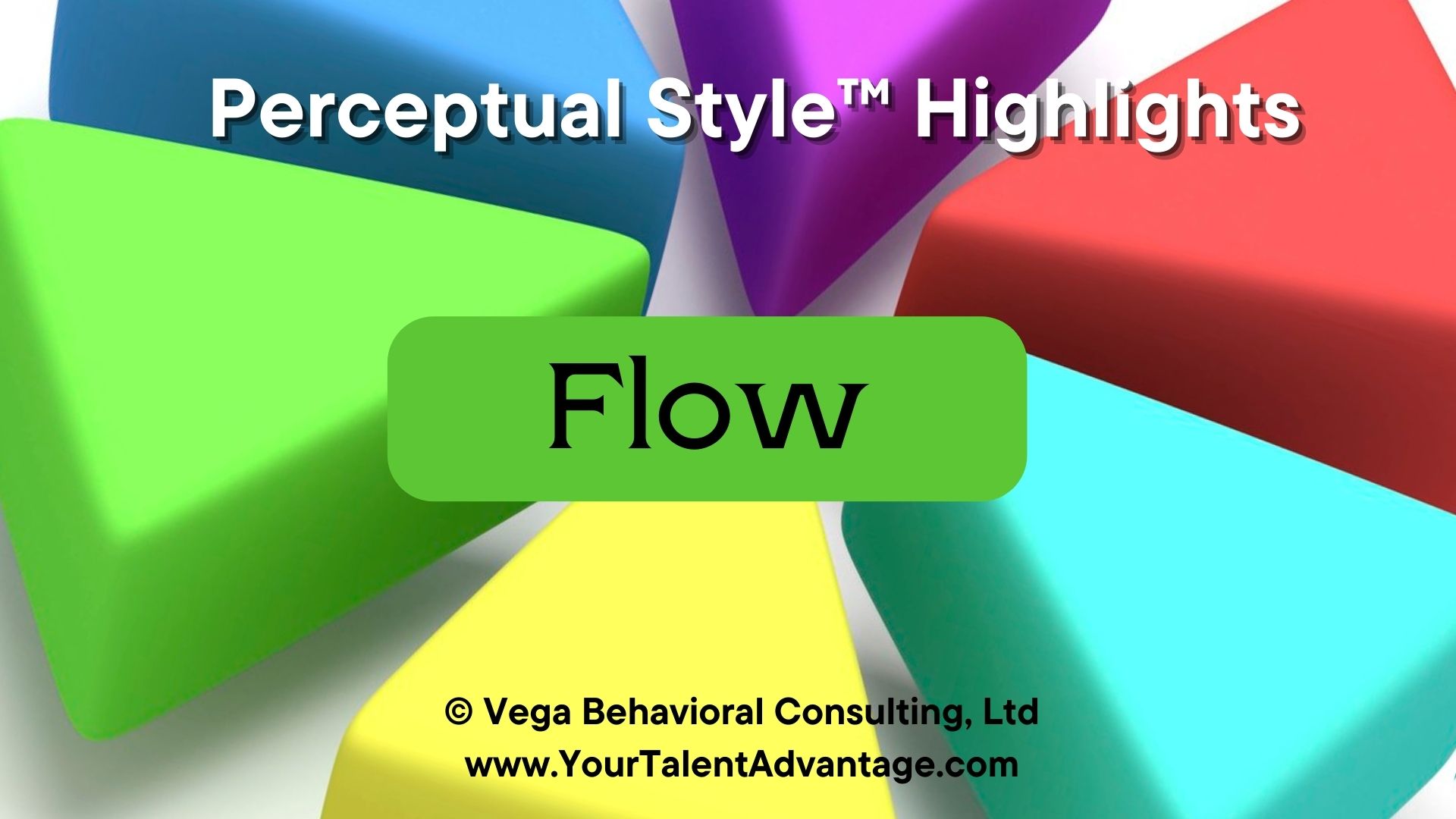Flow Perceptual Style and Conflict
Restoring Harmony Amid Conflict
Conflict is a natural part of life. From minor disagreements to significant disputes, how you handle conflict can shape your relationships and outcomes.
Here’s the key: your Perceptual Style influences how you approach and resolve conflict. If your style is Flow, you bring a harmony-driven, empathetic approach that seeks to defuse tension and restore connections.
Why Understanding Conflict Matters

Conflict isn’t just about opposing viewpoints; it’s about how we connect and communicate when differences arise. When handled well, conflict can:
-
Strengthen trust by addressing misunderstandings.
-
Promote collaboration by emphasizing shared goals.
-
Reduce recurring issues by resolving underlying tensions.
-
Build deeper relationships through empathy and compromise.
Unmanaged or poorly handled conflict, however, can lead to disconnection and resentment . By understanding your strengths, you can turn conflict into an opportunity to nurture relationships and foster understanding.
How Flow People Experience Conflict
As someone with the Flow Perceptual Style, you view conflict as a disruptive force that pulls people apart. You believe harmony and connection are more important than “winning” any argument. Here’s how you typically approach conflict:
-
Seek common ground: You move quickly to identify shared values or goals that can ease tension.
-
Encourage empathy: You help others see each other’s perspectives to defuse power struggles.
-
Value compromise: You prioritize resolution, even if it means accepting outcomes that aren’t ideal for you.
-
Minimize differences: You emphasize similarities to reduce friction and restore connection.
Your ability to de-escalate tension and refocus on relationships makes you a natural peacemaker in challenging situations.

Your Conflict Superpowers

Your strengths in conflict resolution shine through your ability to prioritize harmony and understanding, enabling you to:
-
Encourage compromise: You nurture solutions that prioritize relationships over rigid stances.
-
Promote connection: You focus on rebuilding trust and harmony in the aftermath of disputes.
-
Shift perspectives: Your ability to help others “walk in each other’s shoes” encourages understanding.
-
Focus on unity: You remind others of shared goals and values to bring them back together.
These strengths allow you to transform conflict into an opportunity to strengthen bonds and create a sense of shared purpose.
Why Understanding Your Perceptual Style Matters
Conflict doesn’t have to be divisive. By understanding your Perceptual Style, you can:
-
Recognize your natural strengths and use them to resolve disagreements constructively.
-
Avoid frustration by addressing tension in ways that align with your values.
-
Build stronger, more harmonious relationships by prioritizing connection and empathy.
-
Navigate disagreements with calmness and clarity, focusing on shared outcomes.
Awareness of your style equips you to handle conflict in a way that fosters connection and lasting solutions.

Take Action: Discover Your Perceptual Style

Stop viewing conflict as a source of stress and start using it as a way to build understanding and cooperation. The Perceptual Style Assessment provides insights to help you:
-
Claim your conflict-resolution strengths.
-
Learn how to handle disagreements with empathy and balance.
-
Strengthen relationships through thoughtful, harmony-driven communication
With the assessment, you’ll receive a personalized 45-page Celebrate You! action guide tailored to your Flow Perceptual Style Don’t wait — unlock your potential for effective conflict resolution today.
Explore Other Perceptual Styles and Conflict
Curious about how others approach disagreements? Each Perceptual Style brings unique strengths to conflict resolution:
Your journey doesn’t stop here. True mastery of conflict resolution comes from combining your strengths with an understanding of how others approach conflict. By appreciating the unique approaches of all six Perceptual Styles, you can create harmony, build deeper connections, and develop solutions that strengthen relationships and stand the test of time.
Curious to know more about each of the six Perceptual Styles?
To see a three minute presentation on a specific Perceptual Style, please click on the specific image below






